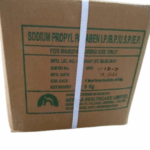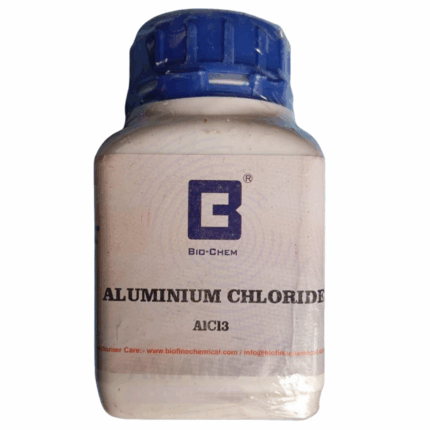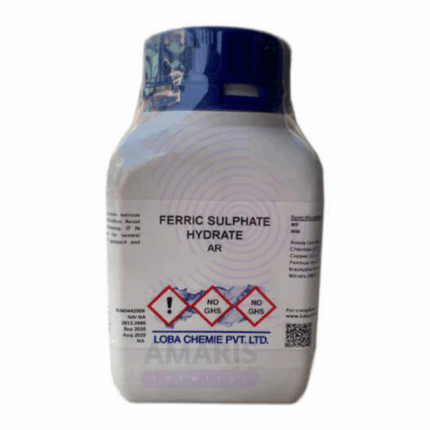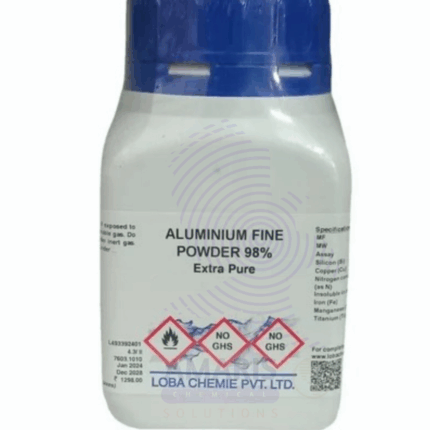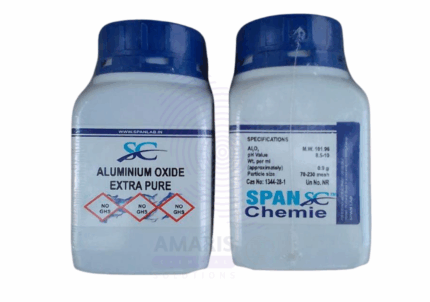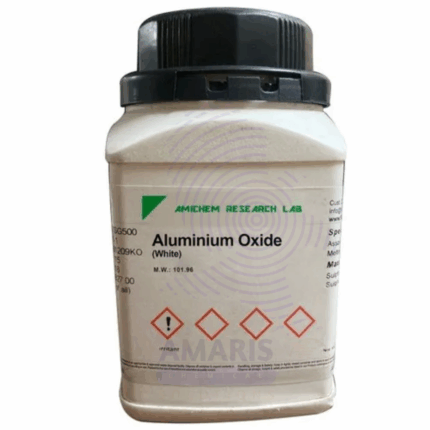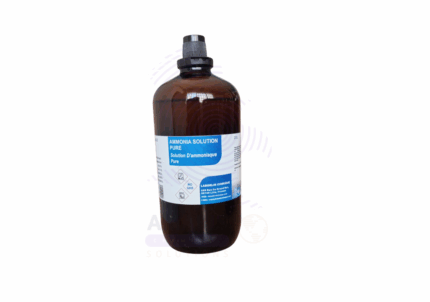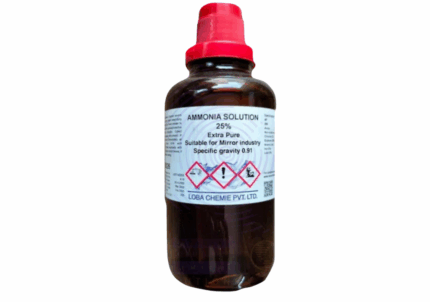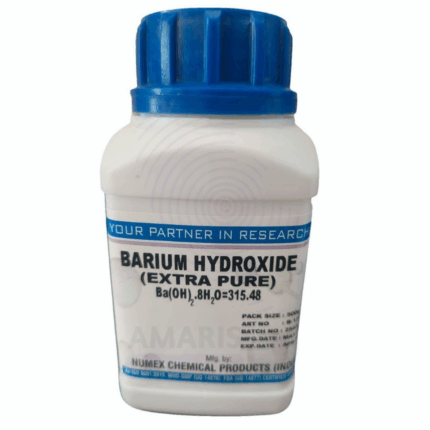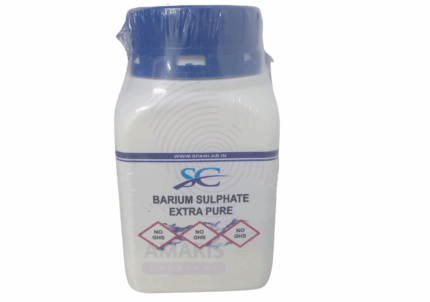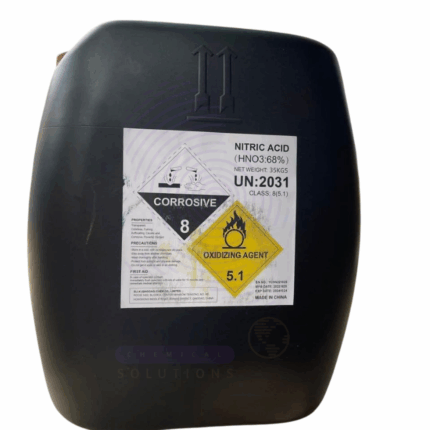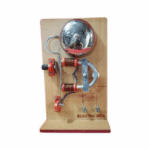
Phloretin Extra Pure
$ 22.25 Original price was: $ 22.25.$ 22.12Current price is: $ 22.12.
Phloretin Extra Pure is a high-grade dihydrochalcone flavonoid renowned for its antioxidant, anti-inflammatory, and skin-penetration-enhancing properties. Derived from apples and certain other fruits, this compound appears as a pale-yellow crystalline powder and is sparingly soluble in water but dissolves well in ethanol and other organic solvents.
In cosmetic and dermatological applications, Phloretin is used to combat oxidative stress, brighten skin tone, and reduce the appearance of fine lines, pigmentation, and UV-induced damage. It also enhances the absorption of active ingredients across the skin barrier, making it a valuable addition to advanced skincare formulations.
In laboratory and pharmaceutical settings, it is utilized for research into cell signaling, anti-cancer mechanisms, and metabolic modulation, given its biological activity on various enzyme systems.
Phloretin Extra Pure
PRIMARY USES
- Used as a potent antioxidant in skincare formulations to protect against oxidative stress and free radical damage.
- Serves as an anti-aging ingredient in serums and creams by improving skin tone, reducing wrinkles, and enhancing elasticity.
- Employed in cosmetic science for its ability to inhibit melanin production, promoting skin brightening and reducing hyperpigmentation.
- Applied in pharmaceutical research as a bioactive flavonoid with anti-inflammatory and anticancer properties.
- Functions as a transdermal penetration enhancer, improving the absorption of active ingredients through the skin barrier.
SECONDARY USES
- Investigated in nutraceuticals and supplements for potential metabolic and cardiovascular health benefits.
- Studied in oncological research for its role in inhibiting cancer cell proliferation and inducing apoptosis.
- Used in neuroscience research for its potential neuroprotective effects in oxidative-stress-related disorders.
- Explored in antibacterial studies due to its capability to disrupt bacterial membranes and inhibit growth.
- Considered in plant physiology and agricultural biochemistry for its natural role in apple and pear phenolics.
1. Basic Identification Attributes
- Chemical Name: Phloretin
- CAS Number: 60-82-2
- HS Code: 2932.99.90
- Molecular Formula: C₁₅H₁₄O₅
- Synonyms:
- Dihydronaringenin
- (2R,3R)-3-(4-Hydroxyphenyl)-1-(2,4,6-trihydroxyphenyl)propan-1-one
- Phloretol
2. Physical & Chemical Properties
- Physical State: Solid (powder or crystalline)
- Color & Odor: White to pale yellow; odorless or faint odor
- Boiling Point: Decomposes before boiling
- Melting Point: ~265–270 °C
- Density/Specific Gravity: ~1.4 g/cm³ (estimated)
- Solubility:
- Slightly soluble in water
- Soluble in ethanol, DMSO, and other organic solvents
- pH Level: Neutral in pure state; slightly acidic in aqueous solution
- Vapor Pressure: Negligible (non-volatile)
- Flash Point: Not flammable under normal conditions
- Autoignition Temperature: Not readily available
- Viscosity: Not applicable (solid form)
3. Safety & Hazard Attributes
- Hazard Class (GHS Classification):
- Not classified as hazardous under GHS for typical laboratory use
- NFPA Ratings:
- Health: 1
- Flammability: 0
- Reactivity: 0
- Exposure Limits:
- No established OSHA PEL or ACGIH TLV
- Reactivity:
- Stable under standard conditions
- Avoid strong oxidizing agents
4. Storage & Handling Attributes
- Storage Conditions:
- Store in a cool, dry place, away from direct light
- Tightly sealed container; avoid humidity
- Incompatible Materials:
- Strong oxidizers, strong acids
- Container Type: Amber glass or HDPE plastic with desiccant
- Shelf Life & Expiration Date: 2–3 years if properly stored
- Special Handling Requirements:
- Use gloves, lab coat, and protective eyewear
- Avoid inhalation of dust
5. Regulatory & Compliance Attributes
- Regulatory Status:
- Not listed as a controlled substance
- Approved for cosmetic and research use in many regions
- Hazard Symbols (GHS Pictograms):
- None required under normal classification
- Transportation Restrictions:
- Not classified as dangerous for transport
- Waste Disposal Method:
- Dispose of in accordance with local environmental regulations
- Avoid release into water systems
6. Environmental & Health Impact
- Ecotoxicity:
- Low toxicity to aquatic organisms
- Persistence in Environment:
- Biodegradable under natural conditions
- Carcinogenicity/Mutagenicity:
- Not listed as carcinogenic by IARC, NTP, or OSHA
- Biodegradability:
- Readily biodegradable
SAFETY PRECAUTIONS
Personal Protective Equipment (PPE):
- Wear a lab coat, chemical-resistant gloves (e.g., nitrile), and safety goggles.
- Use in a fume hood or well-ventilated area to avoid inhalation of dust.
Handling:
- Avoid contact with skin, eyes, and clothing.
- Do not ingest or inhale.
- Minimize dust generation.
- Practice good industrial hygiene—wash hands thoroughly after use.
Storage:
- Store in a tightly sealed container in a cool, dry, and well-ventilated area.
- Protect from light and moisture.
- Keep away from incompatible substances like strong oxidizers.
FIRST AID MEASURES
Inhalation:
- Move the person to fresh air.
- Provide oxygen or artificial respiration if breathing is difficult.
- Seek medical advice if symptoms persist.
Skin Contact:
- Wash the affected area with plenty of soap and water.
- Remove contaminated clothing.
- Get medical help if irritation occurs.
Eye Contact:
- Rinse immediately with plenty of water for at least 15 minutes.
- Seek medical attention if irritation persists.
Ingestion:
- Rinse mouth with water.
- Do not induce vomiting unless instructed by medical personnel.
- Seek medical attention immediately.
FIRE FIGHTING MEASURES
Flammability:
- Not highly flammable, but combustible as a fine powder.
Extinguishing Media:
- Use dry chemical powder, CO₂, foam, or water spray.
Hazardous Combustion Products:
- Emits carbon monoxide (CO), carbon dioxide (CO₂), and other toxic fumes upon decomposition.
Firefighter Protection:
- Wear self-contained breathing apparatus (SCBA) and full protective gear.
- Avoid inhalation of combustion gases.


 Preservatives(food)
Preservatives(food) Flavor Enhancers
Flavor Enhancers Acidulants
Acidulants Sweeteners
Sweeteners Antioxidants
Antioxidants Colorants(food)
Colorants(food) Nutraceutical Ingredients (food)
Nutraceutical Ingredients (food) Nutrient Supplements
Nutrient Supplements Emulsifiers
Emulsifiers
 Collectors
Collectors Dust Suppressants
Dust Suppressants Explosives and Blasting Agents
Explosives and Blasting Agents Flocculants and Coagulants
Flocculants and Coagulants Frothers
Frothers Leaching Agents
Leaching Agents pH Modifiers
pH Modifiers Precious Metal Extraction Agents
Precious Metal Extraction Agents
 Antioxidants(plastic)
Antioxidants(plastic) Colorants (Pigments, Dyes)
Colorants (Pigments, Dyes) Fillers and Reinforcements
Fillers and Reinforcements Flame Retardants
Flame Retardants Monomers
Monomers Plasticizers
Plasticizers Polymerization Initiators
Polymerization Initiators Stabilizers (UV, Heat)
Stabilizers (UV, Heat)
 Antifoaming Agents
Antifoaming Agents Chelating Agents
Chelating Agents Coagulants and Flocculants
Coagulants and Flocculants Corrosion Inhibitors
Corrosion Inhibitors Disinfectants and Biocides
Disinfectants and Biocides Oxidizing Agents
Oxidizing Agents pH Adjusters
pH Adjusters Scale Inhibitors( water)
Scale Inhibitors( water)
 Antioxidants(cosmetic)
Antioxidants(cosmetic) Emollients
Emollients Fragrances and Essential Oils
Fragrances and Essential Oils Humectants
Humectants Preservatives
Preservatives Surfactants(cosmetic)
Surfactants(cosmetic) Thickeners
Thickeners UV Filters
UV Filters
 Fertilizers
Fertilizers Soil Conditioners
Soil Conditioners Plant Growth Regulators
Plant Growth Regulators Animal Feed Additives
Animal Feed Additives Biostimulants
Biostimulants Pesticides (Herbicides, Insecticides, Fungicides)
Pesticides (Herbicides, Insecticides, Fungicides)
 Active Pharmaceutical Ingredients (APIs)
Active Pharmaceutical Ingredients (APIs) Excipients
Excipients Solvents(pharmaceutical)
Solvents(pharmaceutical) Antibiotics
Antibiotics Antiseptics and Disinfectants
Antiseptics and Disinfectants Vaccine Adjuvants
Vaccine Adjuvants Nutraceutical Ingredients (pharmaceutical)
Nutraceutical Ingredients (pharmaceutical) Analgesics & Antipyretics
Analgesics & Antipyretics
 Analytical Reagents
Analytical Reagents Solvents(lab)
Solvents(lab) Chromatography Chemicals
Chromatography Chemicals Spectroscopy Reagents
Spectroscopy Reagents microbiology-and-cell-culture-reagents
microbiology-and-cell-culture-reagents Molecular Biology Reagents
Molecular Biology Reagents Biochemical Reagents
Biochemical Reagents Inorganic and Organic Standards
Inorganic and Organic Standards Laboratory Safety Chemicals
Laboratory Safety Chemicals Specialty Laboratory Chemicals(Special Laboratory Equipment)
Specialty Laboratory Chemicals(Special Laboratory Equipment)
 Demulsifiers
Demulsifiers Hydraulic Fracturing Fluids
Hydraulic Fracturing Fluids Scale Inhibitors(oil)
Scale Inhibitors(oil) Surfactants(oil)
Surfactants(oil) Drilling Fluids
Drilling Fluids
 Dyes and Pigments
Dyes and Pigments Bleaching Agents
Bleaching Agents Softening Agents
Softening Agents Finishing Agents
Finishing Agents Antistatic Agents
Antistatic Agents
 Admixtures
Admixtures Waterproofing Agents
Waterproofing Agents Sealants and Adhesives
Sealants and Adhesives Curing Compounds
Curing Compounds Concrete Repair Chemicals
Concrete Repair Chemicals Anti-Corrosion Coatings
Anti-Corrosion Coatings
 Surfactants(cleaning)
Surfactants(cleaning) Builders
Builders Enzymes
Enzymes Solvents (Cleaning)
Solvents (Cleaning) Fragrances
Fragrances
 Electronic Chemicals
Electronic Chemicals Catalysts
Catalysts Lubricants
Lubricants Photographic Chemicals
Photographic Chemicals Refrigerants
Refrigerants Automotive chemicals
Automotive chemicals Pyrotechnic Chemicals
Pyrotechnic Chemicals
 Biodegradable Surfactants
Biodegradable Surfactants Bio-based Solvents
Bio-based Solvents Renewable Polymers
Renewable Polymers Carbon Capture Chemicals
Carbon Capture Chemicals Wastewater Treatment Chemicals
Wastewater Treatment Chemicals
 Pigments
Pigments Solvents(paint)
Solvents(paint) Specialty Coatings
Specialty Coatings Binders/Resins
Binders/Resins Additives
Additives Driers
Driers Anti-Corrosion Agents
Anti-Corrosion Agents Functional Coatings
Functional Coatings Application-Specific Coatings
Application-Specific Coatings
 Fresh Herbs
Fresh Herbs Ground Spices
Ground Spices Whole Spices
Whole Spices Spice Blends
Spice Blends Dried Herbs
Dried Herbs
 Leavening Agents
Leavening Agents Dough Conditioners
Dough Conditioners Flour Treatments
Flour Treatments Fat Replacers
Fat Replacers Decoratives
Decoratives Preservatives(baking)
Preservatives(baking)
 Plasticizers & Softeners
Plasticizers & Softeners Reinforcing Agents
Reinforcing Agents Adhesion Promoters
Adhesion Promoters Vulcanizing Agents
Vulcanizing Agents Antidegradants
Antidegradants Blowing Agents
Blowing Agents Fillers & Extenders
Fillers & Extenders Accelerators & Retarders
Accelerators & Retarders
